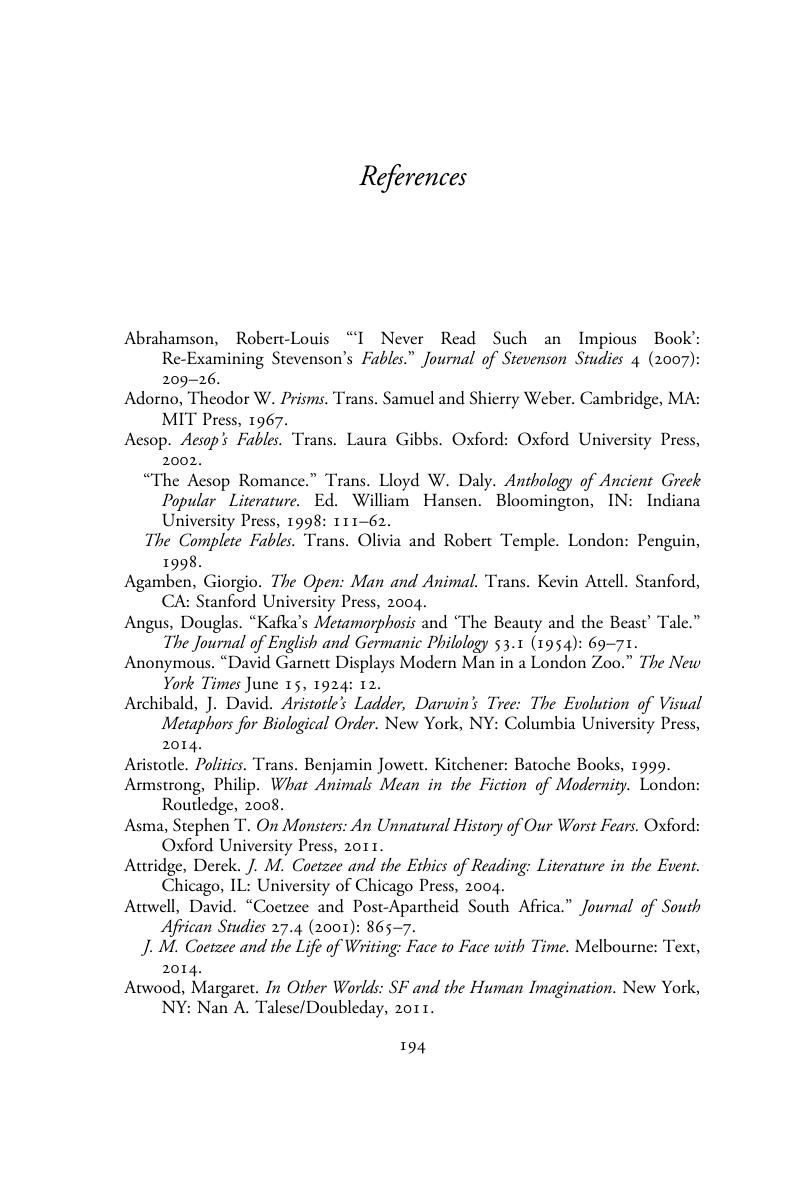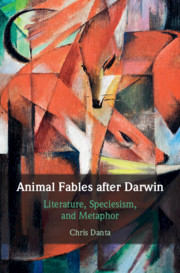Book contents
- Animal Fables after Darwin
- Animal Fables after Darwin
- Copyright page
- Dedication
- Contents
- Figures
- Acknowledgments
- Prologue Uplifting Animals
- Chapter 1 Looking Up, Looking Down
- Chapter 2 The Grotesque Mouth
- Chapter 3 “The Highest Civilisation among Ants”
- Chapter 4 “An Animal among the Animals”
- Chapter 5 Animal Bachelors and Animal Brides
- Chapter 6 Scapegoats and Scapegraces
- Coda “Diogenes of the Zoo”
- References
- Index
- References
References
Published online by Cambridge University Press: 29 June 2018
- Animal Fables after Darwin
- Animal Fables after Darwin
- Copyright page
- Dedication
- Contents
- Figures
- Acknowledgments
- Prologue Uplifting Animals
- Chapter 1 Looking Up, Looking Down
- Chapter 2 The Grotesque Mouth
- Chapter 3 “The Highest Civilisation among Ants”
- Chapter 4 “An Animal among the Animals”
- Chapter 5 Animal Bachelors and Animal Brides
- Chapter 6 Scapegoats and Scapegraces
- Coda “Diogenes of the Zoo”
- References
- Index
- References
Summary

- Type
- Chapter
- Information
- Animal Fables after DarwinLiterature, Speciesism, and Metaphor, pp. 194 - 208Publisher: Cambridge University PressPrint publication year: 2018



